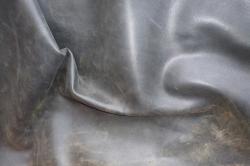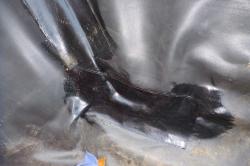- Information
- Products
- Pond Construction
- Koi Info
- Pond Info
- Portfolio
- Portfolio Introduction
- Portfolio I
- Portfolio II
- Portfolio III
- Portfolio IV
- Portfolio V
- Portfolio VI
- Portfolio VII
- Porfolio VIII
- Porfolio IX
- Portfolio X
- Porfolio XI
- Porfolio XII
- Portfolio XIII
- Porfolio XIV
- Portfolio XV
- Portfolio XVI
- Portfolio XVII
- Portfolio XVIII
- Portfolio XIX
- Portfolio XX
- Portfolio XXI
- Interest
how to: tape liner folds
Liner taping is really an essential procedure to undertake in your quest for the best pond possible as it prevents big folds of liner coming out from the sides of your pond. Functionally, this flapping liner can trap debris and create dead spots
Liner taping needs to undertaken with the proper technique or else the tape simply will not hold. It has taken me several years of experimentation with different products to find the procedure that holds for the long run. Remember, we recommend the use of EPDM Rubber Liner
Liner taping needs to undertaken with the proper technique or else the tape simply will not hold. It has taken me several years of experimentation with different products to find the procedure that holds for the long run. Remember, we recommend the use of EPDM Rubber Liner
When taping a pond, you need to start filling and pulling the liner to eliminate as many folds as possible - especially on the bottom. Then, create folds [usually in the corners] then commence taping systematically around the perimeter
As the water rises, continue to tape above it. The tape sets instantly and you need to use the proper glue which is fish safe. Don't attempt to tape to far above the water as when the level rises to that point, you may find it the fold too tight or too loose. Less than 2 feet above works well The procedures outlined below also apply when patching leaks although for leaks, we often apply a double patch
As the water rises, continue to tape above it. The tape sets instantly and you need to use the proper glue which is fish safe. Don't attempt to tape to far above the water as when the level rises to that point, you may find it the fold too tight or too loose. Less than 2 feet above works well The procedures outlined below also apply when patching leaks although for leaks, we often apply a double patch
Step by Step Liner Taping Procedure
step #1 - As with a lot of things, preparation is everything. A new liner is usually pretty clean, but make sure there is no dirt and debris. This is easily accomplished with a rag and some water. If attempting to tape a dirty liner, a wire brush on a power drill will easily clean it of algaestep #2 - If the liner is not absolutely dry, the tape will not stick. A hair dryer not only dries the liner quickly, it also make the liner more supple which is necessary in colder weather. It goes without saying, you need to be very careful not to drop the dryer into the pond
step #3 - This may not be an essential task but we treat the liner with a spray on liner prep which I feel aids in the adhesion ability. It makes the liner more receptive to the glue
step #4 - Before applying any glue, it is advisable to rough up the liner to create a profile. A wire brush is helpful for this task or a cordless drill with brush attachment works well. Again, this preparation is key
step #5 - Liner glue must be used. Although the tape is sticky, it will not stick without the glue. A little glue goes a long way so don't over apply thickness wise. However, always put a little extra on in terms of dimension so that when you press the tape into place, there is glue under all of it. If a corner doesn't have glue under it, it will come up, usually instantly. After about 10 seconds of brushing on the glue, it becomes very sticky and this is when you want to apply the tape
step #6 - Sticking down the tape is not as easy as it would appear. Common mistakes include uneven coverage with one side of the fold having more liner tape than the other. Air bubbles are another thing to avoid, start working the tape from the middle out to minimize them. The tape should be firmly pressed into place. Uncured tape works best as it will stretchand the tape bonds instantly and can be submerged right away
step #7 - The tape needs to be rolled down and a heavy steel roller works well. If possible, a hard surface underneath [2"x 8" etc] is advised but often impractical. The edges should be almost welded down and you should not be able to lift them up
Once you get the routine down, taping is not that difficult and makes for an infinitely better finished product. We had 1 client spend over $100 in tape with no success before they called us. Because another shop had no practical experience, they didn't mention the glue. After getting the righ advice from us, they successfully fixed the leak
step #5 - Liner glue must be used. Although the tape is sticky, it will not stick without the glue. A little glue goes a long way so don't over apply thickness wise. However, always put a little extra on in terms of dimension so that when you press the tape into place, there is glue under all of it. If a corner doesn't have glue under it, it will come up, usually instantly. After about 10 seconds of brushing on the glue, it becomes very sticky and this is when you want to apply the tape
step #6 - Sticking down the tape is not as easy as it would appear. Common mistakes include uneven coverage with one side of the fold having more liner tape than the other. Air bubbles are another thing to avoid, start working the tape from the middle out to minimize them. The tape should be firmly pressed into place. Uncured tape works best as it will stretchand the tape bonds instantly and can be submerged right away
step #7 - The tape needs to be rolled down and a heavy steel roller works well. If possible, a hard surface underneath [2"x 8" etc] is advised but often impractical. The edges should be almost welded down and you should not be able to lift them up
Once you get the routine down, taping is not that difficult and makes for an infinitely better finished product. We had 1 client spend over $100 in tape with no success before they called us. Because another shop had no practical experience, they didn't mention the glue. After getting the righ advice from us, they successfully fixed the leak
Folding Technique
We usually put "V folds" in the corners and the liner is tucked back underneath itself. Its kind of like wrapping a present and takes a bit of a knack to get it right. We use uncured tape which stretches and we normally fill up a big show tank to allow us to quickly tape without waiting on a slow cold water hose for filling
Also be cognizant of the jet locations - you can't seal them through 3 layers of liner. Don't worry about perfection - you won't achieve it. But once full and with a little bit of algae, if you did a good job you will be very hard pressed to see any folds
We usually put "V folds" in the corners and the liner is tucked back underneath itself. Its kind of like wrapping a present and takes a bit of a knack to get it right. We use uncured tape which stretches and we normally fill up a big show tank to allow us to quickly tape without waiting on a slow cold water hose for filling
Also be cognizant of the jet locations - you can't seal them through 3 layers of liner. Don't worry about perfection - you won't achieve it. But once full and with a little bit of algae, if you did a good job you will be very hard pressed to see any folds



